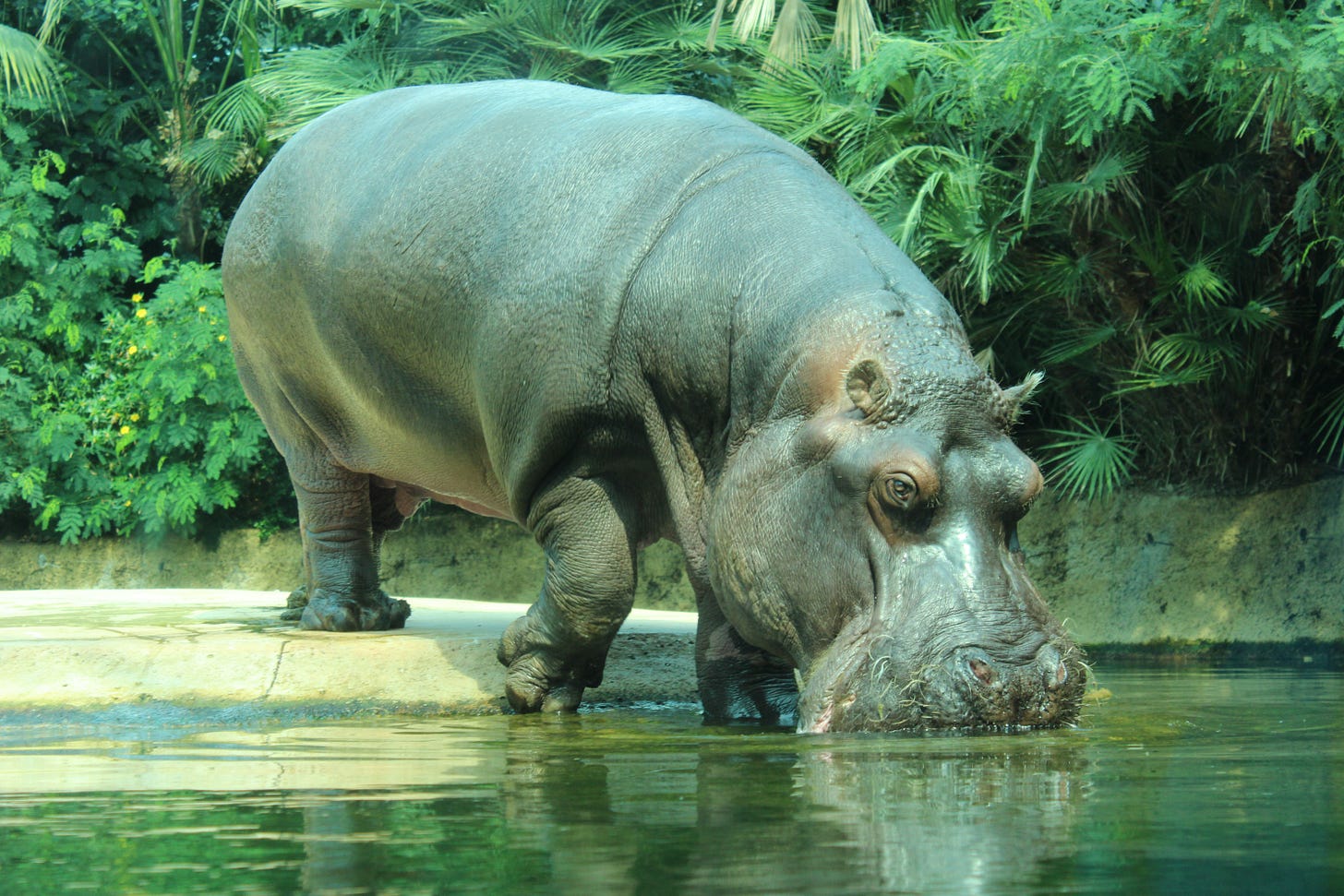Welcome to Thursday Things! If you enjoy this edition, please click the heart icon in the header or at the end of the post to let me know.
“Thursday Things!” Photo by Lady Bugz on Unsplash
Who invented the pie chart?
You probably don’t know. But I do!
It’s my favorite member of the Scottish Enlightenment. Sure, you can have your David Hume and his buddy Adam Smith. I’m not denying their massive achievements. Hey, Smith, explicated the workings of the market system and made an insightful analysis into the Wealth of Nations. Great stuff!
My guy took it further with An Inquiry into the Permanent Causes of the Decline and Fall of Powerful and Wealthy Nations. It’s well and good to know how nations become rich, but probably just as important to know how and why they decline, right?
But you know what makes these weighty economic concepts easier to understand? Good visualizations of data! And that’s why my guy invented the pie chart, the bar graph, the line graph, and the area chart.
All of those. One man.
Of course, I’m talking about William Playfair.1
Yet the pie chart was created by a master, indeed the first master, of information design, the late-eighteenth- and early-nineteenth-century Scottish economist William Playfair. Tufte includes Playfair’s first pie chart, an illustration of the land holdings of various nations and empires circa 1800, in his book The Visual Display of Quantitative Information.
Playfair was experimenting with data visualization long before his invention of the pie chart. He also came up with the more truthful bar chart, history’s first example of which appeared in his Commercial and Political Atlas of 1786
When he wasn’t analyzing commercial and political information and inventing graphic, Playfair kept busy serving king and country as a secret agent. His greatest coup? Collapsing Napoleon’s currency:
During Great Britain’s wars with France, he served his country as a secret agent, even coming up with a plan to counterfeit assignats, a French currency at the time, in order to destabilize the enemy’s economy. “Their assignats are their money,” he wrote in 1793, “and it is better to destroy this paper founded upon an iniquitous extortion and a villainous deception than to shed the blood of men.” Two years after the plan went into effect, the assignat was worthless and France’s ship of state had more or less run aground.
He was also a silversmith and an engineer. He was an assistant to James Watt, inventor of the steam engine. Playfair himself invented a new method of rolling steel. While living in Paris, took part in the storming of the Bastille. He later had to flee the wrath of the Revolutionary government.
His greatest failure? He couldn’t invent a graph or chart capable of adequately displaying his awesomeness.
Playfair. William Playfair.
The first pie chart ever. Source: William Playfair.
Wild hippos of South America
I know what you’re thinking. Hippos don’t live in South America! Hippos are native to Africa. There aren’t any wild hippos in South America!
That’s where you’d be wrong. Sure, the forces of evolution and continental drift conspired to ensure that there was no native hippopotamus population in South America. But one man with a vision was able to overcome nature’s “mistake”. He said “No, no. I want hippos.” And he got hippos.
Because that man was Pablo Escobar.
Gather ‘round…
Colombia: Pablo Escobar's hippo population is a huge problem
Colombia boasts the biggest hippo population outside of Africa. Different estimates point to something between 90 and 180 animals, but there are still doubts about the real number.
"What worries me more about this is that the population has continued to grow exponentially," German Jimenez, a biology professor at the Pontifical Javierian University in the Colombian capital, Bogota, told DW.
Thought I was kidding, didn’t you? Oh, there’s hippos! Lots of hippos. And more every day. Read on!
In the 1980s, [Pablo Escobar] smuggled four hippos from a wildlife park in Dallas, Texas, into his new exotic zoo east of Medellin, Colombia's second-largest city.
They became part of his massive 2,000-hectare (roughly 5,000-acre) Hacienda Napoles ranch in Puerto Triunfo, which comprised a Spanish colonial house, a landing strip, many artificial lakes, roads and even its own gas station.
Escobar wanted a truly exotic wildlife park, so he also brought rhinos, elephants, giraffes, ostriches and many more animals, calling it his "own Noah’s Ark."
And who’s going to tell him no? Miguel? Miguel says no? Miguel’s dead.
Anyone else? Didn’t think so.
Things went fine until Columbian security forces shot and killed Escobar in 1993. The government then took over his wildlife park and ran it as competently as governments are known for running things, which meant a bunch of hippos soon escaped into the nearby Magdalena River.
That worked out well — for the hippos.
It turns out the Magdalena is a lot like the native ecosystem of hippos back in Africa, only without those pesky crocodiles, lions, hyenas, and other predators.
The hippos In Colombia have no competitors and no predators. They enjoy steadier weather and water levels than in Africa, where intense droughts act as population control.
Basically, the animals can eat and mate all year round in Colombia. …
There are now seven identified hippo population groups along the Magdalena basin, according to a new report by Colombia's Humboldt Institute and the National Science Institute that was commissioned by the Environment Ministry.
So, yeah, they’re wreaking havoc on the local flora and fauna, attacking people, eating crops, pooping prodigiously, and generally acting like a bunch of four-legged Pablo Escobars.
You might think — ah, but what about the deadliest predator of all, Man? Why don’t they just shoot the hippos and be done with it?
That would seem sensible. But no.
In 2009, when the government ordered the death of a hippo called Pepe that was posing a threat to locals. Pepe's death sparked a public outcry, and in 2012 a law was passed making it illegal to kill hippos.
Justice for Pepe!
So Columbian authorities, having tied their own hands with a stupid law, went to plan B:
Since Pepe, authorities have been trying, unsuccessfully, to limit hippos' numbers by chemically sterilizing them or castrating them. This is a hard task given their immense size, aggression and internal testicles.
"This process entails hippos being captured, anesthetized, transported by helicopter, and surgically operated upon; thus, it is very challenging and can be dangerous for both the people and hippos involved," according to Subalusky and Jimenez’s study.
Ya think?
Anyway, if nothing is done to contain the hippo population — and let’s be honest, nothing will — the Columbian hippo population could reach 1,000 or more by 2035.
And from there? Well, it just keeps growing exponentially. Look at this graph:
Now aren’t you glad William Playfair invented the line graph? Source: Oryx/Cambridge University Press
Get more science details here:
Potential ecological and socio-economic effects of a novel megaherbivore introduction: the hippopotamus in Colombia (“The hippopotamus is an ecosystem engineer that can have profound effects on terrestrial and aquatic environments and could therefore affect the native biodiversity of the Magdalena River basin. Hippopotamuses are also aggressive and may pose a threat to the many inhabitants of the region”)
Ecosystem effects of the world’s largest invasive animal (“Our results suggest that hippos recapitulate their role as ecosystem engineers in Colombia, importing terrestrial organic matter and nutrients with detectable impacts on ecosystem metabolism and community structure in the early stages of invasion. Ongoing range expansion may pose a threat to water resources.”)
“You lookin’ at me?” Photo by Andreea Russu on Unsplash
Thank you for reading!
Please click the hearts, leave a comment, and use the share feature to send this issue to a friend who might enjoy it. See you next Thursday!
First featured in the 18 June 2020 Break the Rules Edition of Thursday Things.







